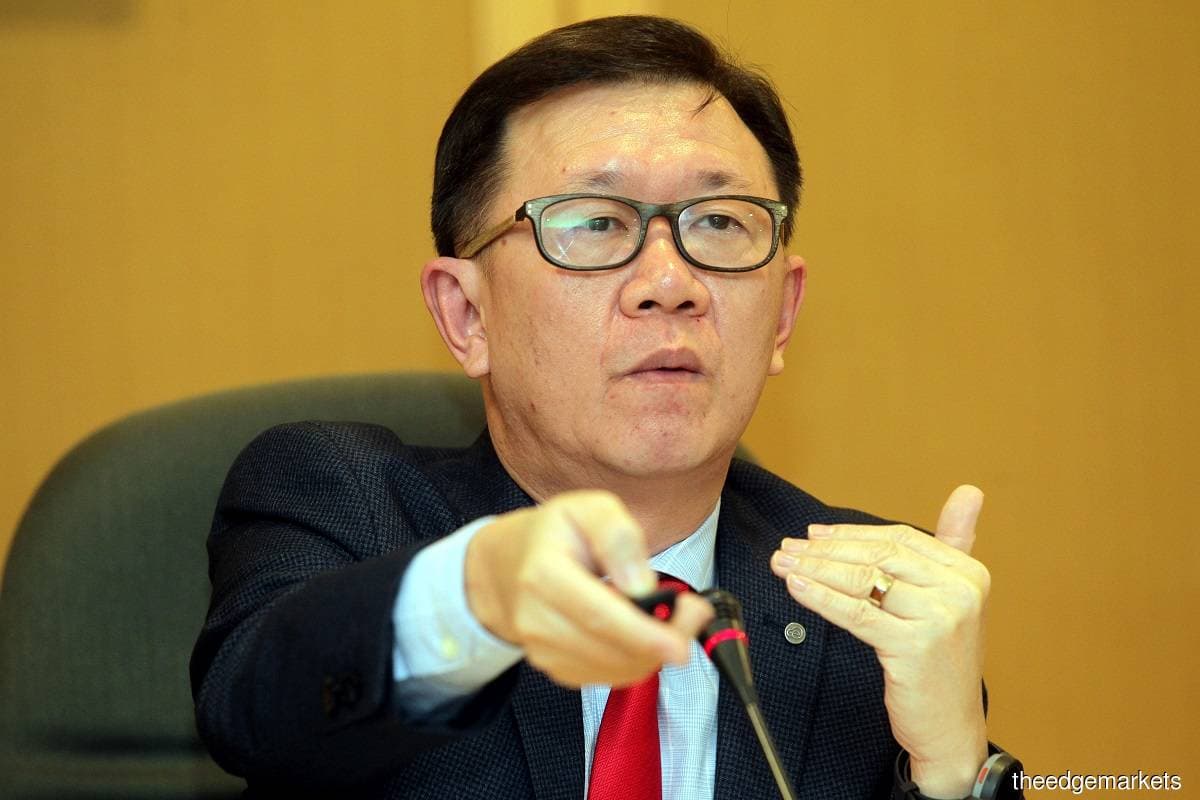
KUALA LUMPUR (Feb 4): The Socio-Economic Research Centre (SERC) has revised its forecast of Malaysia's gross domestic product (GDP) growth to 4% for 2021 from 5% previously to account for the current Movement Control Order (MCO), which was reimposed on Jan 13.
SERC executive director Lee Heng Guie said the revision of the country's GDP projection was made for the sanctions placed until Feb 4.
"For now I am sticking to my 4% GDP growth target. So far it is the lowest compared to the market consensus, so I hope the GDP number for 2021 will not be that low," he said in a virtual media briefing.
Compared to the consensus, the International Monetary Fund (IMF) is projecting Malaysia's economy to rebound by 7% in 2021, while the World Bank is forecasting Malaysia's economy to grow by 6.7% in 2021 after contracting by 5.8% in 2020.
Both IMF and the World Bank forecasts are closer to Bank Negara Malaysia's estimated GDP growth of 6.5% to 7.5%.
Lee said how Malaysia's economy goes in 2021 will be determined by a few wild cards: the effectiveness of the virus containment efforts, vaccination programmes, implementation of Budget 2021's spending programmes and cash assistance as well as export figures to help support the economic growth.
"Based on my preliminary estimate, we may have seen negative growth in the first-quarter GDP number this year, due to the scarring effects from the fourth quarter last year and coinciding with the Chinese New Year effect," he said, adding that he is hopeful the export figure could help offset the downside effect in the first quarter.
For 2021, Lee said exports are projected to recover gradually by 3.3%, versus an estimate of -1.4% contraction in 2020, supported by the gathering pace of economic recovery of Malaysia's major trading partners and higher commodity prices.
Inflation, on the other hand, is expected to normalise into positive territory and increase between 1% and 1.5% in 2021, from a 1.2% decline in 2020, in tandem with the improved economic growth, higher crude oil prices and aided by the low base effect.
The 1.2% drop in consumer price index (CPI) for 2020 marked its first deflation since 1969 when the CPI fell 0.41%.
Meanwhile, Lee said the unemployment rate will recover gradually in 2021, in tandem with better economic growth and turnaround in investment activities. The gauge is estimated to be 4.5% at end-December 2021, slightly lower compared to 4.8% estimated for 2020.
However, the 4.5% jobless rate estimation translates into a near 720,000 unemployed persons, 40% higher than the near 510,000 unemployed persons seen in pre-Covid-19 period.
Lee cautioned that unemployment is a lagging indicator and may take a longer time to return to pre-pandemic levels at between 3.3% and 3.4%.
To recap, the unemployed rate re-ticked higher to 4.8% in November last year, with 764,000 unemployed persons and 4.7% in October 2020, after stabilising at 4.6% for the months of August and September last year. Prior to that, the unemployment rate hit its peak in May with a 5.3% jobless rate with 826,100 unemployed individuals.
As headline inflation is expected to increase at a moderate pace in 2021 and the labour market slack is unlikely to dissipate any time soon, Lee expects the central bank to keep the current appropriate accommodative monetary policy stance for some time.
It was reported that BNM was maintaining the overnight policy rate at 1.75% last month as it saw continued recovery in the global economy, although downside risks remained amid uncertainties surrounding the Covid-19 pandemic.